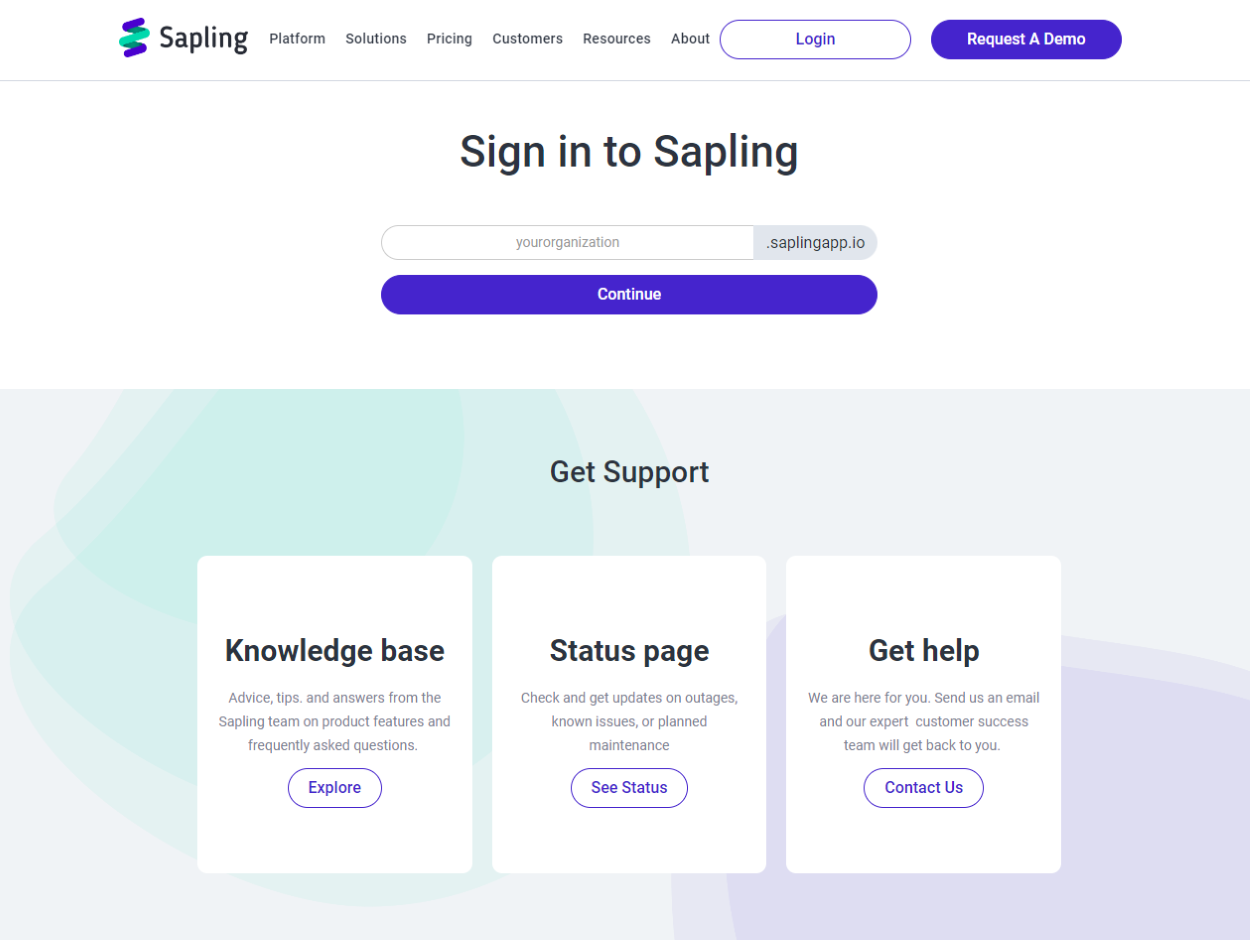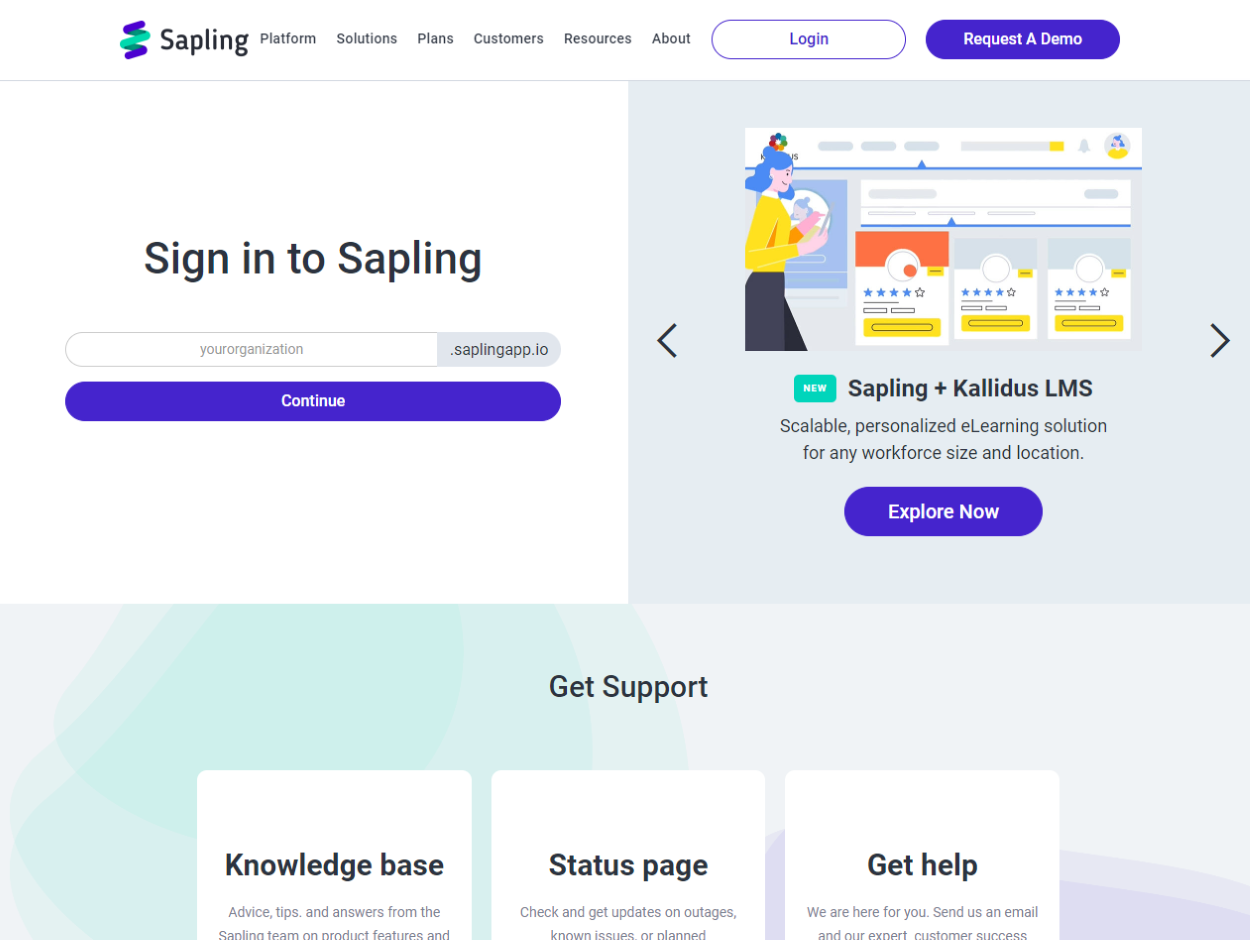Sapling Case Study
- Category: M&A, Web, PLG, Data
- Company: Sapling (Acquired!)
- Project date: June 2021
- Project URL: saplinghr.com/pages/sign-in (archived version, defunct post-acquisition)
Project Summary
At Sapling, an HR SaaS platform, we were acquired by a UK-based Human Capital Management firm called Kallidus. At this point, we began merging initiatives strategically and also at a tactical-level. To this end, we setup a campaign initiative, enticing our Sapling customers to learn more about two Kallidus products that were being embedded into our suite of HR solutions: "Learning Management System" and "Performance Management System."
We started with a PLG sub-campaign initiative, designing an upgraded-Login Page with footprints designed in Figma by our Product team, for me to implement in our web platform, Webflow. I used Pardot "Custom Redirects" to track clickthroughs from the CTA buttons on this login page to the two corresponding Demo landing pages, which I fully designed and developed myself.
By this point, I already had a better sense of best practices around our Demo LPs with the help of previous statistical analysis that was done in Google Optimize + Google Analytics. I had also already put together a Google Sheet for all A/B tests to propose a hypothesis, test variable, etc. In parallel, I had prepared a second sheet on this file to plan future A/B tests by quantifying "Impact" and "Effort" which allowed us to rank in descending order future tests that have the best potential for impact with minimal friction.
This entire campaign was an experiment in its own right, as we wanted to compare the progress of Learn vs. Perform.
From here, I integrated a Pardot form for each landing page, and this form had a JS snippet that would append UTMs from the querystring params to custom fields that I created in the Pardot <> Salesforce database. We set the field sync behavior config in Pardot to use the latest value in either ecosystem. I added these fields for the purpose of capturing "Most Recent UTMs", in addition to the default Pardot <> Google Analytics integration which captures "Original UTMs."
We had a separate flow of users we were promoting Kallidus Learn + Perform to via several channels: Capterra, Google Ads, Microsoft Ads, Pardot Emails, etc.
For each platform, I had a corresponding UTM sheet that provided a consistent, standardized naming convention for all 5 UTMs params to ensure we're tracking the Channel/Campaign/Ad/etc at both a holistic and granular level.
As Pardot doesn't have page tracking out-of-the-box unlike Marketo, I setup corresponding "Page Actions" for each page, giving us a complete picture of the user journey from start-to-finish!
Finally, to put all of the quantitative data above in perspective, I setup Hotjar Segments using wildcard filters on the UTM parameter values to visualize the UX on both Learn and Perform LPs in a qualitative context.


